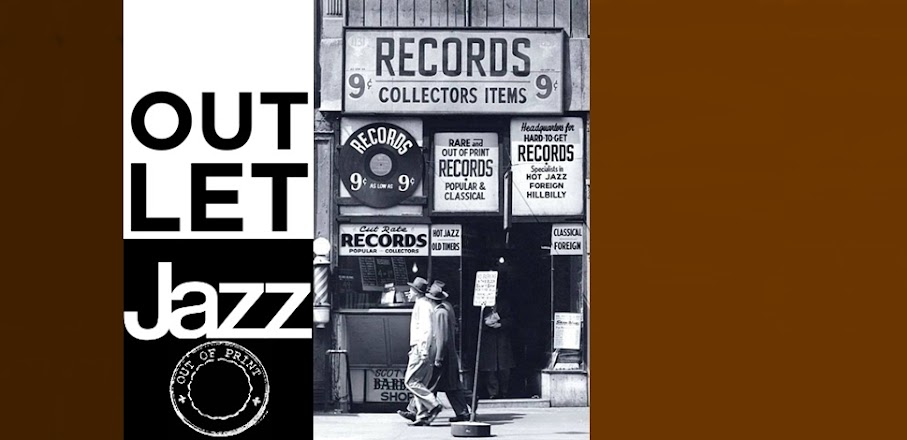It is easy to distinguish between hot water and cool water. If you step into a bathtub full of what you think is cool water and it turns out to be boiling hot, it is particularly easy to distinguish the difference.
If, however, you have spent many months or years or even decades listening to hot jazz, on stepping into the less torrid waters provided by music such as you will hear on these sides, the contrast may be far less easy to define. Indeed, few of the jazz experts themselves are in agreement on what constitutes cool jazz, or whether it is an outgrowth of bop, or whether it it an extension or even a synonym for it.
If the experts themselves can't agree, then how can you, the average listener, possibly know the answer? Well, at least your ears will provide you with certain unmistakable clues. Reacting to many years during which excitement and an aggressive, hard-driving spirit seemed to be essential to a great deal of what was then known as hot jazz, some modern musicians during the middle 1940s rejected this concept in favor of a smoother, subtler approach. The horns, particularly the saxophones, tended toward a softer, gentler tone; the drummers, instead of using the bass drum for regular accents, transferred the bulk of the beat to the cymbal; though syncopation was still in general use, there was more extensive use of even, legato phrasing.
Stan Getz in the archetypical musician of the cool school. Born February 2, 1927 in Philadelphia he lived in New York City from the age of ten.
After flirting briefly with the bass and bassoon, he took up the saxophone while playing in New York's all-city orchestra. Leaving James Monroe High School in the Bronx, he joined an orchestra led by one Stinky Rogers but was promptly ordered to return to school.
Though the original model of all the "Brothers" was unmistakably Lester Young and their styles at first seemed largely similar, it was Getz who emerged first to form his own combo and establish himself as one of the great individualists of the cool generation.
Horace Silver, a native of Norwalk, Connecticut, born there in 1928. Horace was a tenor saxophonist like Stan when he first played local gigs, but he had switched to piano when Stan Getz heard him one evening in Hartford and was soon invited to join the Getz quintet, with which he remained on tour for a year. It was during this period that six of these titles were recorded.
Silver's piano style, which is finally receiving the recognition it deserves, is a result not of outward striving towards atonalities and modern classical complexities, but of an inner development and search for deeper "soul" and meaning to the blues roots of jazz. Words like "funk" and "soul" are open to many subjective interpretations, let's suggest that you listen awhile and discover that whatever the word, or the tune, Silver plays real swinging piano. *(Liner notes)*
These recordings, which originally appeared on Roost Records, are all Stan Getz showpieces, some of which were described by Down Beat editor and critic Nat Hentoff as "among the classic products of our contemporary jazz era". Discussing further the special qualities of Stan's playing on these records, Hentoff wrote: "Much has been written about his 'sound' of almost unprecedentedly piercing purity. There is also the Getz way with a melody as he often sculpts a melodic line with the sinuous care of a Martha Graham... Most important from a jazz viewpoint is that he swings. Sometimes vigorously, sometimes exceedingly gentle, he always moves". *Paul Shapler*
Side 1
1 - Yvette
(Gigi Gryce)
2 - Wild Wood
(Gigi Gryce)
3 - Melody Express
(Gigi Gryce)
4 - Penny
(Horace Silver)
5 - Potter's Luck
(Horace Silver)
6 - Split Kick
(Horace Silver)
Side 2
7 - Rubber Neck
(Frank Rosolino)
8 - Mosquito Knees
(Gigi Gryce)
9 - Sweetie Pie
(John Jacob Loeb)
10 - Hershey Bar
(Johnny Mandel)
11 - Tootsie Roll
(Stan Getz)
12 - For Stompers Only
(Stan Getz)
#1 to #6:
Stan Getz (tenor sax), Jimmy Raney (guitar), Horace Silver (piano), Tommy Potter (bass), Roy Haynes (drums).
Recorded in New York City, August 15 (#1, #2, #3, #5) and March 1 (#4, #6), 1951.
#7 and #8:
Stan Getz (tenor sax), Jimmy Raney (guitar), Al Haig (piano), Teddy Kotick (bass), Tiny Kahn (drums).
Recorded live at Storyville Club, Boston, October 28, 1951.
#9 and #10:
Stan Getz (tenor sax), Al Haig (piano), Tommy Potter (bass), Roy Haynes (drums).
Recorded in New York City, May 17, 1950.
#11 and #12:
Stan Getz (tenor sax), Horace Silver (piano), Joe Calloway (bass), Walter Bolden (drums).
Recorded in New York City, December 10, 1950.


https://1fichier.com/?te8du0nfj5cv0sxsfffg
ReplyDeleteThank YOU!!!
ReplyDeleteGenial! Muchísimas gracias Héctor
ReplyDeleteMuchas gracias,
ReplyDeleteThank you very much, blbs.
ReplyDelete